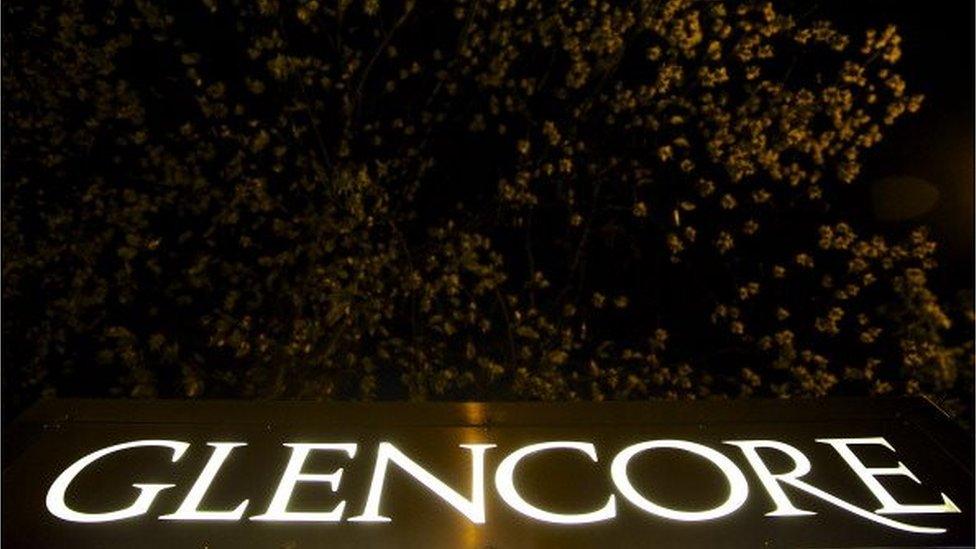What's going on at Glencore?
- Published
- comments

I travelled to Glencore HQ last week to try to find out a bit more about the company
The claim that firm XYZ is the "biggest company you've never heard of" is overused. But in the case of commodities giant Glencore it might just be true.
And over the last week its shares have been on a rollercoaster ride, the like of which rarely happens to multi-billion dollar companies.
One week ago shares in the company lost a third of their value on the back of almost no real news, only to recover the loss in the next four trading sessions.
This is the kind of thing which really just isn't supposed to happen.
Glencore is listed on the stock exchange in London and Hong Kong but based in Switzerland - where I spent a couple of days last week digging into this story.
It employs around 180,000 people and operates in more than 50 countries.
It is usual at this point to note that it has more ships than the Royal Navy but that perhaps says more about the size of the navy than the size of the firm's fleet.
What makes Glencore unique and interesting - and has added to investor worries over the past few weeks - is the fact the firm is both a commodity miner (digging metals out of the ground globally) and a commodity trading firm (buying and selling raw materials for its counterparts).
The company was privately owned for decades before listing on the stock market in 2011 (a deal which made many employees, on paper at least, fabulously rich).
In 2013 it acquired mining company Xstrata, creating one of the biggest players in global commodity markets.
But if the last week has been a rollercoaster for shareholders, the bigger picture since 2011 has been of a big-dipper, with the shares that once traded at over £5 trading at around £1 today. Last Monday they were briefly closer to 70p.
Despite talking to people familiar with the company itself - investors, analysts and traders - over the last few days, I've yet to hear a convincing argument as to what drove last Monday's huge sell-off.
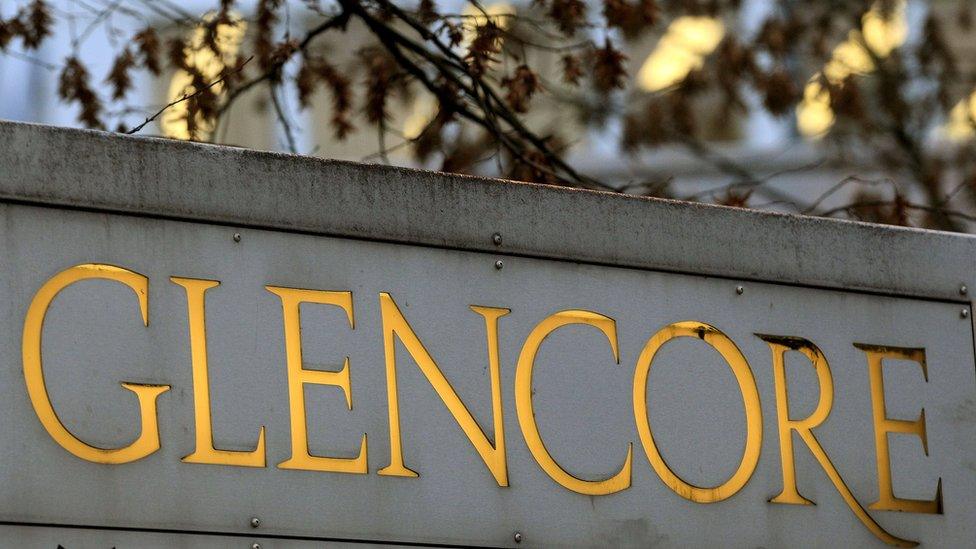
Perhaps the best explanation is that many saw the share price down 10-15% and assumed - much as I did - that "somebody must know something, FTSE 100 companies don't fall that far unless something is up."
Investor concerns
The most probable catalyst remains a note on the entire mining sector published last Monday by stockbrokers Investec.
It examined the debt levels of the various mining firms and how they would cope with continued low (or even lower) prices for raw materials.
Glencore has the highest debt levels in the sector and was seen as especially vulnerable.
In technical parlance, Glencore has always been more "leveraged" than other mining companies - that is to say the level of its debt versus the value of its shares has always been higher.
In the good times that leverage acts to juice up returns, but in the bad times it magnifies risk.
The principle here is the same as with a residential mortgage.
If one buys a house for £100,000 with an £80,000 mortgage and a £20,000 deposit then one is bearing a higher level of risk but also exposed to more potential rewards than someone with a £50,000 mortgage and a £50,000 deposit.
Consider those two examples and what happens if the value of the house rises or falls by 10%.
In the first case (with a £20,000 deposit) then a 10% rise in house prices takes the owner's equity stake up to £30,000 - a 50% increase on £20,000. But a 10% decrease wipes out half of that £20,000.
The less-leveraged house buyer (with a 50% deposit) gains proportionately less from a 10% rise in house prices (a "mere" 20% return as their stake rises from £50,000 to £60,000) but also loses much less in a 10% fall (20% as their stake falls from £50,000 to £40,000).

"Leverage" will be familiar to anyone with a mortgage
Glencore's higher level of leverage has been cited by many dumping the firm's stock in the past few months,
Compared to its mining peers, Glencore can be difficult company for investors to value.
Working out exactly how much a mining firm's shares are worth is (relatively) straightforward, by looking at the price at which it is selling the stuff it gets out of the earth versus its costs of production, one can get a reasonable estimate of the company's profitability.
The bigger picture
But Glencore is a trading firm, too, and trying to estimate how much it will make in any given year from trading is a more difficult proposition.
The phrase that keeps coming up in conversation is "black box".
Investors don't fully understand how the company makes its trading income and so find it hard to estimate what it will be in the future,
And traditionally the company has been loath to give too much information on the process for fear of presenting a commercial advantage to rival traders.
The share fall since 2011 has been driven by a general fall in the price of commodities that has been going on for four years now: while oil's high-profile fall over the last 18 months has caught the headlines, the bigger picture in commodities is of a longer running fall.
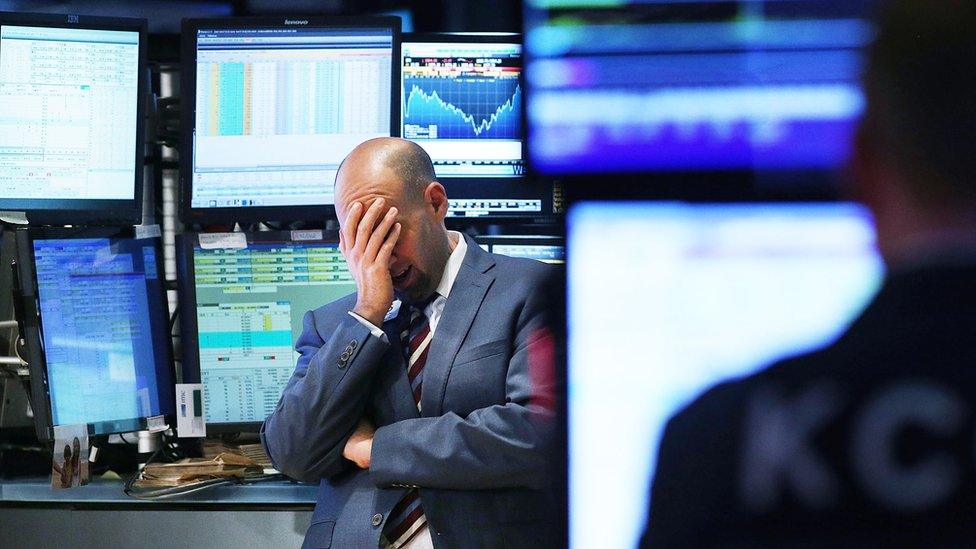
What next?
Glencore's share price has mirrored that of other miners over most of this period - investors in the sector have generally had a miserable time.
Only in the past few months has the share price decoupled from the others and fallen further, as investors have become more concerned about leverage and the uncertain nature of the firm's trading revenues.
The company is now taking steps to address both worries, with a plan to sell assets and reduce debt coupled with a more open approach to its trading operations.
In effect, they are giving up potential returns - if commodity prices rebound - in order to minimise the risks if they remain low.
For years the firm has been described as "secretive".
The lesson of the past week is perhaps that secrets can make already-edgy investors very nervous indeed.
- Published5 October 2015
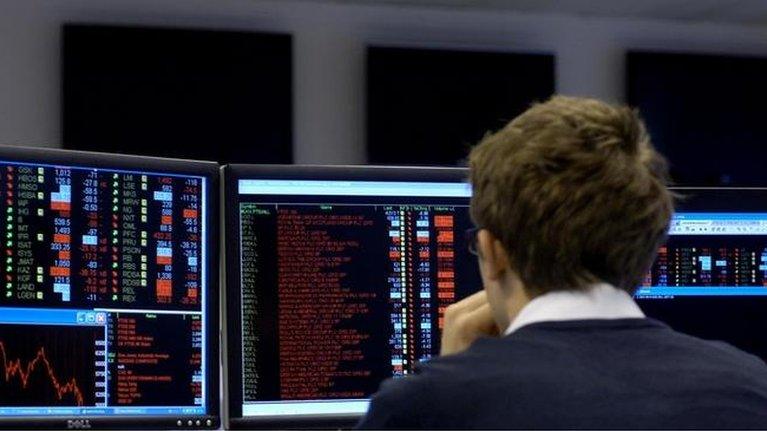
- Published29 September 2015
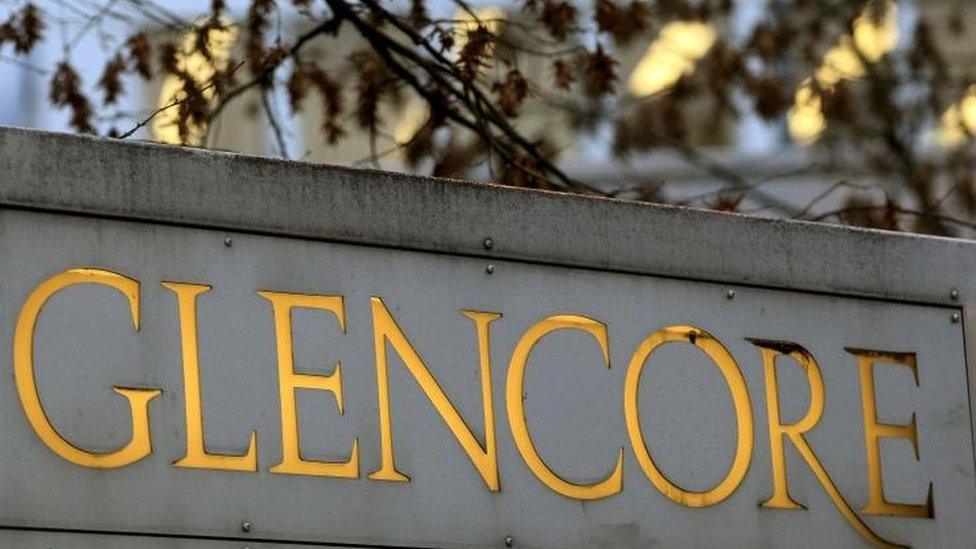
- Published28 September 2015
